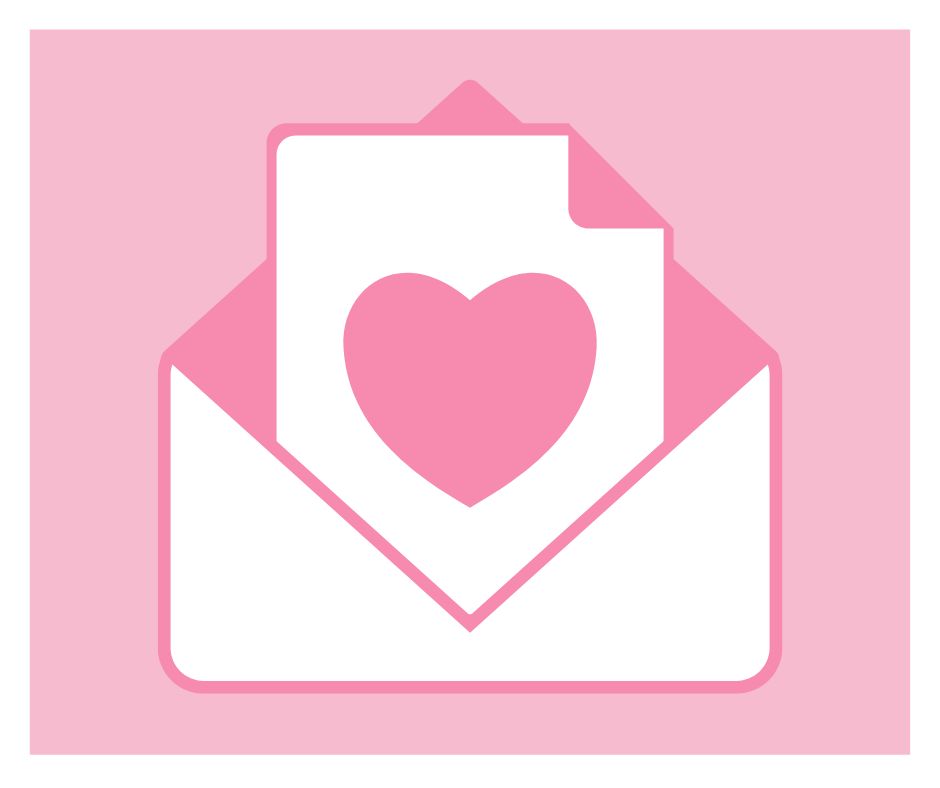18 Effective Email List Ideas for Romance Authors

Like many romance authors, I struggled for a time with my email list. I did all the things necessary to set it up, but I’d get stuck on what to email each week. But finally, I found my groove and I email my list each week.
You can read the text version below the video.
Free Author Email Planner available to Write with Harte Members. Not a member? Join here free.
Below are 18 ideas on what you can send your email list. But before we get to that, I want to mention a couple of things that I think are important when considering what to email your subscribers.
Email subscribers have raised their hands (or in this case, given you their email), so they need to be treated well. Part of that means, not sending them only “buy my book” emails.
Also, email subscribers are your readers, fans, or people who are interested in you. They want to know and engage with you. Your emails should reflect that. While email is a marketing tool, don’t treat your subscribers as “prospects” or “buyers.” I think of my subscribers as friends I’m having coffee with so the emails I send them are friendly, engaging, and fun. I don’t want them to see my email and think “marketing.” I want them to think, “I wonder what craziness Jenna is up to this week.”
In the end, authors who have a connection with their readers, have greater subscriber retention and sales, so think about your email as contacting a friend, not selling books.
Planning Your Email
If you don’t have an email or are new to email marketing, be sure to check out Build Your Author Email List of Raving Fans. Once your list is growing, you need to email them regularly. It’s easiest to do this if you have a plan.
- How often will you email? Weekly? Twice a month? I wouldn’t do less than once a month as your subscriber might forget they subscribed.
- What will be the format of your email? This is extremely helpful in coming up with your content. For example, my format is to open with a personal story, situation, or anecdote. Next I have something book related, which could be a special offer or sale or a new release, but it could also be research I’m doing or a snippet of something I wrote. Sometimes it’s about what I’m reading and has nothing to do with my books. Note, that in my “book” section, I don’t always have “buy my book.” In fact, while I have a link to my special offer in my signature, I actively promote a once a month or so (unless there’s something going on like a sale or new release). A good book about the ratio of informative/entertaining content to sales content is Jab, Jab, Jab, Right Hook by Gary V. It’s older, but still good.
- Consider releases, holidays, or themes. Keep track of what’s going on in your writing (e.g. releases), special holidays or events, or have themes for your email. This too can help you come up with ideas. For example, if it’s March, perhaps an email about spring cleaning books…assuming anyone gets rid of books.
Email Ideas
Below are 18 ideas you can use to provide fun and informative information to your subscribers. It goes without saying that you don’t have to do all 18 of these ideas each week. Instead, use this list to plot your emails a month or so at a time, mixing things up so it’s interesting and rewarding for your subscribers.
1. Sneak Peeks
Share exclusive excerpts or early chapters from your upcoming romance novels. I love this because it’s like teasers that get your readers excited about the book.
2. Character Profiles
Introduce your readers to your characters. You can do it like an interview, or, like Pippa Grant, you can have your characters write part of the email. Or you can share the character’s profile, delving into their backgrounds, personalities, and motivations, letting readers know how you molded the character. Share fun facts or behind-the-scenes insights that will make your readers feel connected to your characters on a personal level. I’ve been known to share images or recipes related to my characters’ interests.
3. Cover Reveals
Like teasers, cover reveals are a great way to get your readers excited about a new release. Perhaps you can ask for your readers’ feedback on covers in a “This or That” cover poll, which gets them invested in your book. Offer a glimpse into the design process, revealing the inspiration and emotions behind the creation.
4. Reader Polls and Feedback
Even when I’m not doing an official poll, I’m often asking my subscribers questions and for their feedback. This builds a connection and relationship between me and my readers, and empowers my readers, making them feel a part of my writing success…which they are! Other options for polls include choosing characters names or titles. I had polls deciding on a breed dog for a character. Once, I admitted to wanting to kill one of my characters and asked my readers’ thoughts about it. (It was a resounding NO!).
5. Exclusive Short Stories
Remember when I said your subscribers have given you something important? They should be rewarded for that by getting things that no one else gets. I’ve done this a couple of times, and readers enjoy it. It can be exclusive forever, or a story they get first.
As far as what to write, keep it your world. Perhaps write a prequel or sequel story. Or if you’re thinking of a new story idea, write a little something and see what your readers think.
6. Exclusive Bonus Content
Similar to exclusive stories, but shorter, you can create bonus content for your subscribers. For a year or so, my ghost writing client asked me to write a 2000-word bonus chapter that went to her email list. Sometimes it was a deleted scene or an extended epilogue. Other bonus content options include alternative endings or a between-the-books vignette, if you’re writing a series (this is what I want to do for my Valentine series).
7. Exclusive Discounts or Giveaways
Reward your loyal readers with special discounts or limited-time promotions on your books. Alternatively, host giveaways where readers can win signed copies, merchandise, or even a chance to be a character in your next book. These gestures of appreciation deepen the relationship between you and your audience.
8. Author Events and Appearances
Let your readers know about your upcoming book signings, author panels, or online events where they can meet you in person or engage in virtual discussions. Include links for registration or ticket purchase, allowing your audience to be part of your author journey beyond the pages of your novels.
9. In the News
If you’ve been interviewed, won an award, or received rave reviews, let your subscribers know.
10. Q&A Sessions
Invite your readers to submit burning questions about your books or your writing process. Select a few intriguing queries and provide detailed answers in your newsletter. You can even use it on social media for a live session. This interactive approach not only builds a personal connection with your audience, but also provides valuable insights into your craft.
11. Book Recommendations
My onboarding emails include some tidbits about authors that I enjoy and/or inspire me. I often share my TBR list or what I’m currently reading. I also ask them what they’re reading which serves several purposes: 1. It has the subscriber engaging with me, 2. Provides me important insight into my readers’ preferences that I can use to help me in finding more readers, and 3. It might be a book I want to read.
12. Writing Tips
Remember, your goal is to connect with readers. If your email is focused on writers, you’ll get a lot of writers subscribing, but they may not be people who want to read what you write. So your email list should focus on your target reader and what they like to read. With that said, you can offer insights or tips into writing. After all, every romance author I know started out as a romance reader.
13. Collaboration News
If you’re collaborating with other romance authors on an anthology or joint project, share updates and sneak peeks with your readers. Let them in on the excitement and build anticipation for the release. While you’re at it, consider a swap with your collaborator(s), so that you’re not only sharing the project, but each other’s works.
14. Author’s Life
Share glimpses into your personal life as an author. Talk about your writing routine, inspirations, or hobbies. Let your readers get to know you beyond your books. I shared with my readers when my cat died. I talked about how strange it was when I didn’t have to meet my kids off the bus anymore because they were now in college.
15. Factoids, Tidbits, News Related to Your Topic
Sometimes truth is stranger than fiction. If there’s something going on in the real world that relates to what you write about, share it. For example, I once pondered to my subscribers about what my characters would have done during the pandemic.
I wrote about the Hope Diamond, and included the new (at the time) information that revealed it was once the French Blue. I also shared the curse.
I have a character who is afraid to fly, so when I flew into San Francisco (the landing gets close to the bay) I took a picture and shared it with my readers asking them what they thought the character would think being that close to the water during the landing.
16. Fan Spotlights
Highlight and celebrate your readers by featuring their reviews, fan art, or personal stories related to your books. Show them that you appreciate their support.
17. Celebrate
Host a Facebook party or Live, or go on Zoom and invite your subscribers to join you for fun and games. You can even invite other authors to join in. I do this every February to promote my Valentine books, but you can have a party any time. Summer…beach read party. Fall…back to school read party. You get the point.
18. Ask for Readers’ Help
Years ago, Amazon didn’t have a lot of money to market. But they new people talked about books they loved, so they decided to give readers a small commission for recommending books. By asking readers to do what they already did, plus get paid, Amazon ultimately grew to the behemoth is it today. You may not become Amazon, but you can capitalize on readers’ love of books and their eagerness to support authors they love. How?
- Use your email list to remind readers how important reviews are and ask them to write one if they haven’t yet.
- When you have a release, ask your readers to help spread the word about it.
- Invite your readers to join you on social media or wherever you are (BookBub, Goodreads, Wattpad, Ream, Patreon, etc).
- Tell them about your ARC team or beta reader group and how they sign up
As a reminder, you won’t do all 18 of these ideas each week. Instead, use this list to plot your emails, mixing things up so it’s interesting and rewarding for your subscribers.








Responses